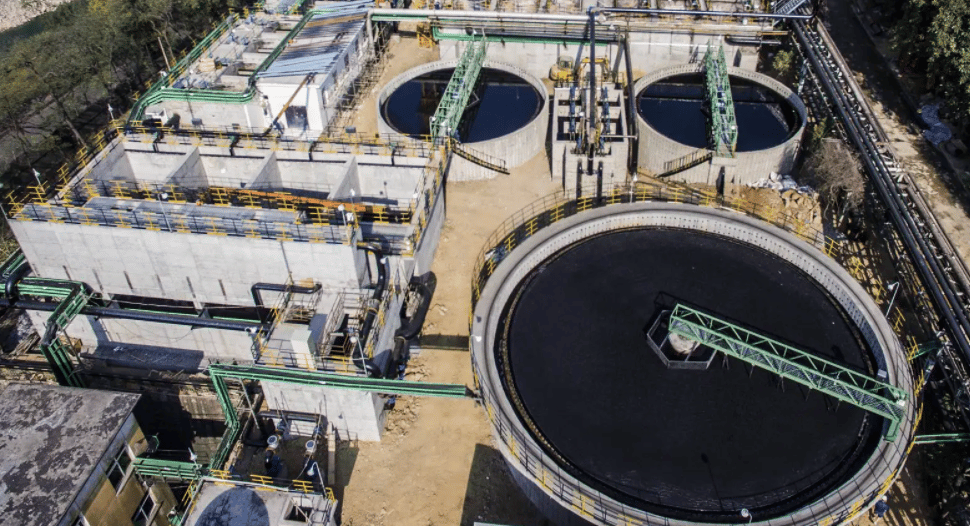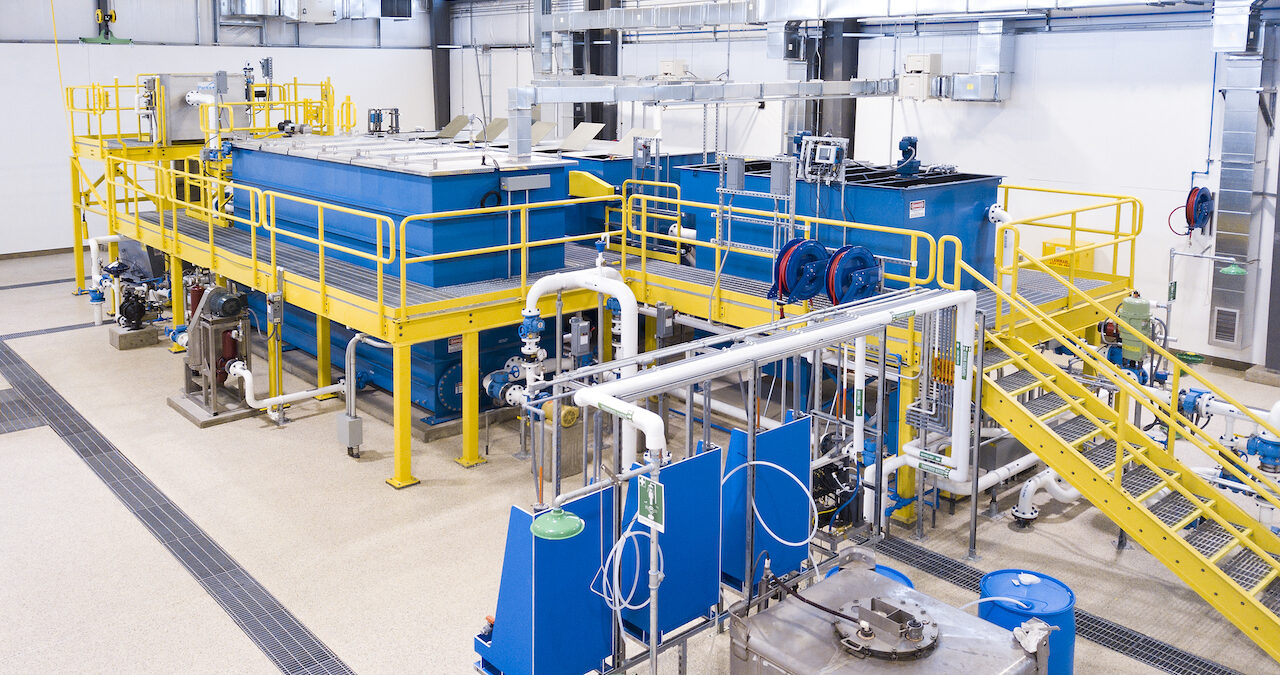Industrial Waste Water Treatment-- Improve Performance with Personalized Water Treatment Systems
Wiki Article
Secret Strategies in Hazardous Waste Water Treatment Procedures
The therapy of commercial wastewater is a vital element of environmental administration, entailing a series of methods designed to minimize the influence of pollutants. From the essential physical techniques that divide solids to the sophisticated chemical and organic processes that target specific contaminants, each technique plays an essential duty in accomplishing water high quality standards. Improvements in innovations such as membrane layer filtering and advanced oxidation procedures provide cutting-edge remedies for enhancing therapy efficacy. Understanding just how these methods adjoin and their effects for sustainability elevates essential concerns regarding the future of wastewater management in market.Physical Treatment Approaches
Exactly how successfully can physical therapy approaches resolve the complexities of industrial wastewater? Physical therapy methods play a critical function in the preliminary phases of wastewater administration, concentrating mainly on the removal of solids and big particulates. Techniques such as flotation, filtering, and sedimentation are essential for minimizing the concentration of put on hold solids, consequently boosting the effectiveness of succeeding treatment processes.Sedimentation entails the gravitational settling of solids, enabling for the splitting up of heavier materials from the wastewater. This method is specifically reliable in making clear water before chemical or organic therapies. Purification, on the various other hand, utilizes numerous media to capture particle issue, ensuring that smaller pollutants are eliminated. This method can be customized to accommodate various types of commercial effluents, creating clearer effluent streams.
Additionally, flotation protection methods, which make use of air bubbles to lift suspended solids to the surface area for removal, are effective in treating wastewater with high focus of fats, oils, and greases. Generally, physical therapy methods serve as a crucial initial step in the extensive management of industrial wastewater, making certain that the lots on succeeding treatment stages is reduced and boosting overall treatment efficacy.
Chemical Treatment Methods
While physical treatment methods lay the groundwork for reliable wastewater monitoring, chemical treatment techniques are essential for addressing the more complicated impurities often discovered in commercial effluents. These techniques make use of various chemical agents to precipitate, neutralize, or oxidize harmful substances, ensuring a more extensive removal of contaminants.
One common strategy is coagulation and flocculation, where chemical coagulants such as aluminum sulfate or ferric chloride are contributed to promote the aggregation of put on hold bits. This process improves solid-liquid splitting up, decreasing turbidity and improving water high quality. Additionally, neutralization procedures are used to change the pH of wastewater, using bases or acids to reduce the effects of acidic or alkaline streams, respectively.
Oxidation-reduction reactions play a critical duty in derogatory natural impurities and virus. Chemical oxidants like chlorine, hydrogen, or ozone peroxide are used to break down complicated organic substances, making them much less hazardous or more eco-friendly. Additionally, progressed oxidation procedures (AOPs) incorporate multiple oxidation strategies to improve pollutant removal efficiency.
Biological Treatment Processes
The performance of wastewater treatment is significantly improved by organic treatment procedures, which harness the all-natural metabolic activities of microbes to disintegrate natural issue and remove pollutants. Industrial Waste Water Treatment. These processes largely entail anaerobic and cardiovascular food digestion, each tailored for certain types of wastewaterAerobic treatment processes use oxygen to support microbial development, promoting the malfunction of natural pollutants into carbon dioxide and water. Common methods include turned on sludge systems, where aeration containers promote the mixing of wastewater with microbes, news and trickling filters, which motivate biofilm development on media surface areas.
Conversely, anaerobic therapy processes happen in the lack of oxygen, using anaerobic microorganisms to disintegrate organic issue, resulting in biogas manufacturing, a renewable energy resource. Anaerobic digesters are commonly used in commercial settings for this purpose, effectively minimizing the volume of sludge while producing beneficial biogas.
The option of a biological therapy approach depends upon wastewater characteristics, treatment goals, and regulatory requirements. The integration of biological procedures in wastewater treatment not just boosts pollutant elimination performance however likewise promotes sustainability by minimizing chemical use and supporting source healing.
Advanced Oxidation Processes

Usual AOP techniques consist of Fenton's ozonation, photocatalysis, and reagent. Fenton's reagent, a mix of hydrogen peroxide and ferrous iron, catalyzes the formation of hydroxyl radicals, making it efficient for treating wastewater having phenolic substances and various other recalcitrant substances.
AOPs provide numerous benefits, including decreased sludge production and the capacity to treat wastewater with high focus of natural pollutants. The implementation of AOPs needs mindful factor to consider of operational parameters and cost-effectiveness, guaranteeing that these innovative techniques are suitably incorporated right into existing wastewater treatment systems.
Membrane Layer Filtering Technologies

Microfiltration is efficient for eliminating suspended bacteria and solids, while ultrafiltration targets smaller sized natural particles and infections. Nanofiltration links the space in between ultrafiltration and reverse osmosis, properly getting rid of organic substances and divalent ions. Reverse osmosis supplies the highest degree of purification, made use of mostly for desalination and removing mono-valent ions.
Membrane layer innovations use countless advantages, including low power consumption compared to typical treatment techniques, modular style for scalability, and the potential for water healing and reuse. Obstacles such as membrane fouling and the requirement for normal maintenance have to be addressed to make sure system effectiveness. Generally, membrane purification modern technologies stand for an important element of contemporary commercial wastewater treatment approaches, advertising sustainability and resource preservation in water management.
Conclusion
In final thought, industrial wastewater treatment employs a diverse range of techniques, consisting of physical, chemical, organic, and advanced methods. Continued innovations in these approaches will further improve the efficiency and performance of wastewater treatment procedures in commercial setups.like this The therapy of commercial wastewater is a vital aspect of environmental administration, involving a range of strategies made to minimize the effect of contaminants.How efficiently can physical therapy techniques deal with the complexities of commercial wastewater?Advanced oxidation procedures (AOPs) stand additional info for an advanced approach in commercial wastewater therapy, designed to properly deteriorate organic contaminants that are frequently resistant to standard treatment approaches (Industrial Waste Water Treatment).In verdict, industrial wastewater treatment employs a diverse range of techniques, including physical, chemical, organic, and advanced methods. Proceeded developments in these approaches will certainly further improve the efficiency and effectiveness of wastewater therapy processes in commercial setups
Report this wiki page